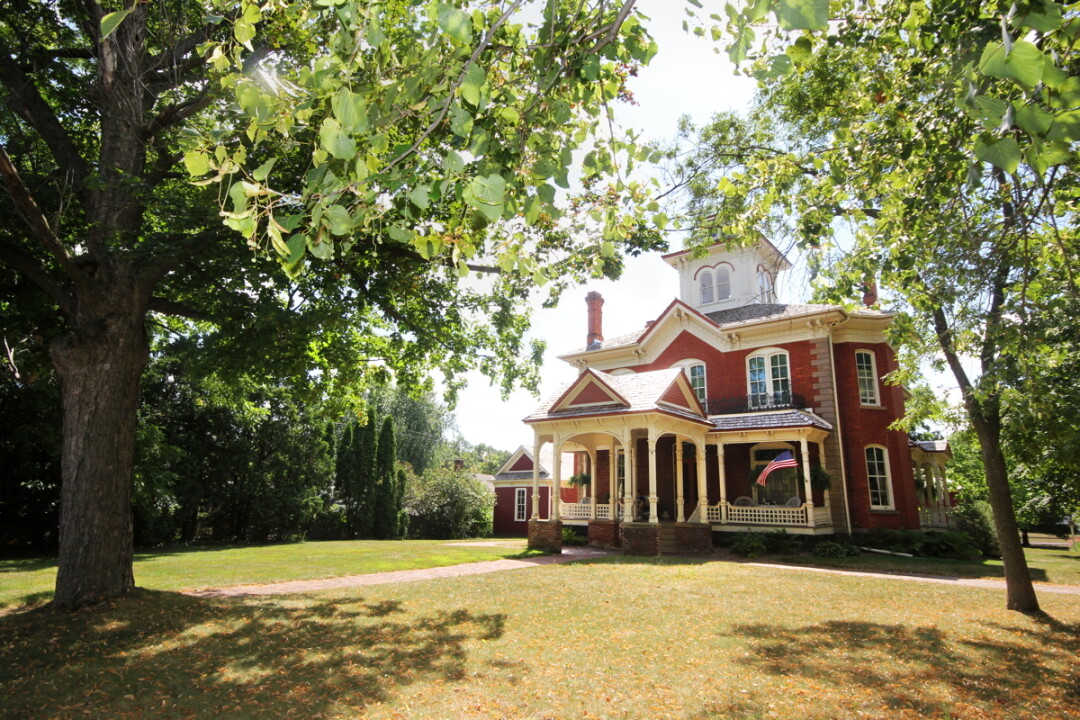Historic Hill: West Hill neighborhood may receive national historical designation
Tom Giffey, photos by Andrea Paulseth |

Perched high above downtown Chippewa Falls, the tree-lined streets of the West Hill neighborhood are dotted with picturesque homes dating as far back as the 1870s. Among them is the Cook-Rutledge Mansion, a High Victorian Italianate jewel built during the lumber boom of the 1880s.
“When you walk into this neighborhood, you have a sense almost that you’re walking back in time.” – Joe Derose, Wisconsin Historical Society
The neighborhood is an historic district in everything but name, and that could change in the near future: The Wisconsin Historical Society is considering applying to put the West Hill Residential Historic District on the National Register of Historic Places. With the help of the Chippewa County Historical Society, the Wisconsin Historical Society held a community meeting last month to discuss the proposal, which was attended by about 60 residents. Public feedback on the plan to create the district was virtually unanimous, said Joe DeRose, survey historian with the Wisconsin Historical Society.

DeRose said the West Hill neighborhood is under consideration as a historic district because of its coherent concentration of buildings with architectural styles ranging from the 1870s to the 1930s. “When you walk into this neighborhood, you have a sense almost that you’re walking back in time,” DeRose said. “You have a sense of what Chippewa Falls was like in the 1930s. The scale, the massing, the materials, were all there at that point in time.”
Jim Schuh of the Chippewa County Historical Society said the potential district was identified in a survey conducted in 1985, but its creation was never pursued. However, the Cook-Rutledge Mansion, 505 W. Grand Ave., has been on the National Register since 1974, and a portion of downtown was designated the Bridge Street Commercial Historical District in 1994.
The National Register of Historic Places is largely an honorific program, not a regulatory one, DeRose said. While property owners sometimes think being on the National Register will prevent them from modifying their buildings, that is not the case, he said. Such restrictions are usually put in place by local landmark commissions – and, unlike the city of Eau Claire, Chippewa Falls doesn’t have a landmarks commission.

So what does it mean to receive National Register status? According to the Wisconsin Historical Society, owners may be eligible for state or federal tax credits to rehabilitate listed properties. In fact, in recent years DeRose said he’s received inquiries from several property owners about the potential for such tax credits. And, while listing doesn’t require property owners to maintain or restore their properties (they can even demolish them if they wish), “listing a property in the registers does trigger state and federal preservation laws that require federal, state, and local government agencies to take into consideration the effect of their plans or projects on the listed property,” the Wisconsin Historical Society says.
The process of being added to the National Register requires several steps. If the Wisconsin Historical Society decides to pursue a listing for the West Hill neighborhood, it will hire a consultant to prepare the nomination paperwork, DeRose said. That application will go before the state Historic Preservation Review Board, a commission appointed by the governor that meets quarterly. It it clears that hurdle, it is forwarded to the National Park Service in Washington, D.C., which makes the final determination. The entire process can take as much as a year and a half. That may seem like a long time, but it’s nothing compared with the city’s – and the West Hill’s – long history.

